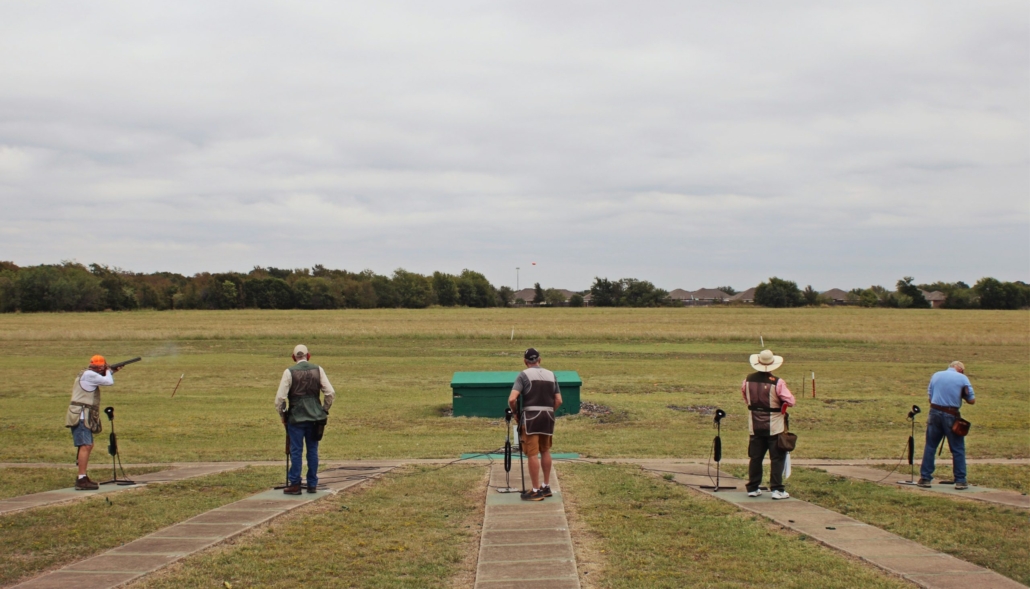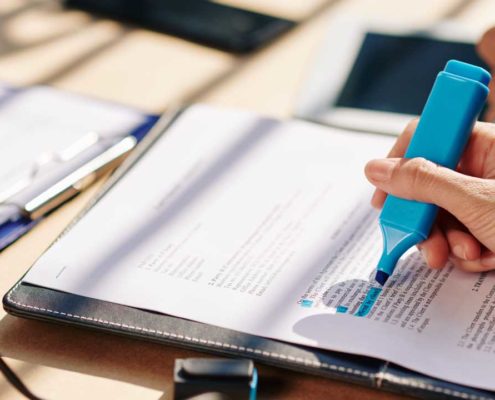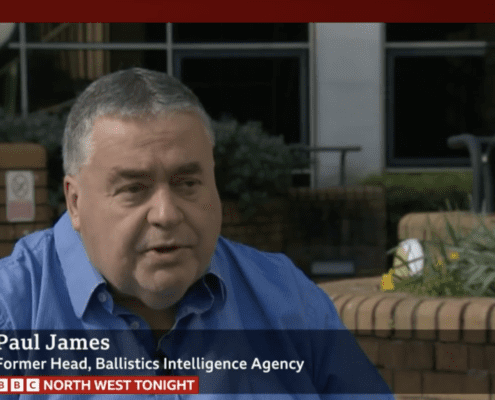 https://arquebus.uk/wp-content/uploads/2022/06/ARQ001-services_salw_thumbnail-v01.jpg
600
600
Callum Lloyd
https://arquebus.uk/wp-content/uploads/2022/02/Asset-1arquebus_logo.svg
Callum Lloyd2024-04-02 16:26:452024-04-02 16:42:51NSCS 3: State SALW Lifecycle Management
https://arquebus.uk/wp-content/uploads/2022/06/ARQ001-services_salw_thumbnail-v01.jpg
600
600
Callum Lloyd
https://arquebus.uk/wp-content/uploads/2022/02/Asset-1arquebus_logo.svg
Callum Lloyd2024-04-02 16:26:452024-04-02 16:42:51NSCS 3: State SALW Lifecycle Management
Of the 1 billion firearms and their ancillaries in circulation today, the vast majority, 85%, are estimated to be in the hands of private individuals according to Amnesty International’s research. The scale of firearms in civilian circulation means controlling access to firearms is vital to both maintain public safety and to allow for their legitimate possession and use by civilians. Licensing and registration enable authorities to regulate the users of firearms, the use of firearms, and the firearms themselves through recording the lifecycle of firearms and determining and identifying their legal status. Arquebus is delighted to invite Adrian Whiting QPM to give his insights on civilian licensing and registration, and the role it can play in a national SALW control strategy.
With a distinguished career in UK policing, Adrian served as a specialist counter-terrorism cadre firearms commander. He later went on to be the UK’s Chief Police Officer (Assistant Chief Constable) responsible for firearms & explosives controls, advising the UK Government on domestic controls. Since retiring from policing, Adrian specialises in reviewing and advising on controls of SALW. His work includes international projects across southeast and eastern Europe for the UNDP, as well as acting as an international SALW control expert for the OSCE.
⁂
To begin with Adrian, what core principles should civilian firearms licensing and registration follow?
AW: Systems should follow a firearms lifecycle management approach. The registration part should be capable of tracing a firearm from manufacture or import, through its various possessors to its export, deactivation, or destruction (when reached). The licensing part should ensure that the various activities through the lifecycle are conducted by natural persons or legal entities (comprising the natural persons who control them) who have the appropriate lawful authority. There will be attendant records in the lifecycle, for example proof testing and even forensic test firing where that is required or becomes necessary, which should be noted in the registry, although the one registry database is not required to be used by all such record makers.
The registry section is the most straightforward. Whilst some firearm records will be amended during the lifecycle, for example if a barrel wears out and is replaced, the registry concerns itself with objective data. It is usually required to assist with classification, and so sometimes requires detailed information about the firearm’s operating system.
The licensing section is far more detailed, and an individual record is subject to change more frequently. It can contain conjecture, for example links to activity reports where the subject is suspected of criminal activity without proof. The assessment of a subject’s suitability to possess firearms and ammunition is clearly critical to citizen safety. If the entire system needs a priority, it is on making that decision on a properly informed basis.
What is the significance of legal definitions in relation to civilian firearms licensing? For example, the legal definition of a firearm, an essential component, or ammunition? Are there any instances of incomplete or missing definitions which provide loopholes for criminals?
AW: Legal definitions are key elements in an effective licensing & registration system. The clear examples of this include a definition of a “firearm” and the definitions of “components parts,” where those component parts are to be controlled in the same manner as complete firearms. In fact, because of the ease of international transport, it is also extremely important for jurisdictions to make every effort to align their definitions through international agreements. Criminal networks are nimble at exploiting differences in legal definitions to avoid criminal proceedings or restrictions – they don’t automatically choose to act illegally for the sake of it, if the criminal enterprise can be advanced through lawful means, in part, then that will be exploited. An example now relates to the controlled component referred to as the “slide.” Portugal has a useful definition, “The part of an automatic or semi-automatic weapon incorporating the breech and moving in a rail on the frame,” but this has not been adopted internationally, potentially allowing gaps in practice.
There are several varieties of licensing that occur globally, most notably the requirement for a licence for each firearm or having multiple firearms per licence. Are there any merits and drawbacks of each approach?
AW: I think that in general having a certificate for an individual that then acts as a licence for several firearms etc whose details are recorded in connection with it is the most efficient, especially where hard copy documents are involved. If systems are online then there is little to choose between those two most common approaches, but online systems often fall short where access is restricted or unavailable, hence the common prevalence for hard copies. Separate licenses for each firearm, spare controlled components (such as an interchangeable barrel) and ammunition can lead to impressive, though impractical, wads of documents being carried around and sifted through by a law enforcement officer.
What are some examples of effective and innovative practices regarding civilian firearms licensing and registration that you have encountered worldwide?
AW: Many jurisdictions link their licensing & registration system to a national database of natural persons, for ease of correct identification. Several hold their database of lost/ stolen or previously lawfully possessed firearms as part of the registry element of their system, but most still have their registry of seized/found/recovered firearms etc held separately. This is usually because that latter registry falls under the leadership of a different government ministry, perhaps a Ministry of Justice (as the items may be evidential), rather than a Ministry of the Interior. The most effective integration I have seen has been that achieved in Lithuania, with links achieved with numerous national/state databases and with dealers (including manufacturers and gunsmiths in this instance).
In your experience, what are the benefits of integrating civilian firearms registries with other systems? Which systems are typically integrated with civilian firearms registries?
AW: The general benefit of integration is in improving assurance around correct identification of a natural person and to ensure opportunity for information regarding that person (relating to their suitability to possess etc) to flow. Identification relevant database links include those with systems such as passport and driving licence holders, perhaps holders of other authorities that require background checks – commercial explosives and chemical licenses for example and residence/citizenship registration. Suitability relevant databases include those for coming to adverse notice of police and similar bodies, court convictions and even trade or professional body registrations.
I think the most common linkages are with state identification, police intelligence and court conviction records.
Can you comment on the requirement for regular suitability checks for licensed firearms owners, for example mental health or domestic violence checks? What innovative practices and technologies can enhance public safety in this context?
AW: I think the single most crucial element of any licensing and registration system is the suitability assessment (to possess firearms and ammunition). This single assessment and its attendant decision is, of itself, much more important as to whether a person should possess a firearm and ammunition at all, as opposed to how many, of what type and for what purpose. Those latter questions are important where the objective is to have a limit on the numbers of lawfully possessed firearms to minimise the risk of diversion, but individual suitability is paramount, in my view.
My own police service has led me to conclude that past behaviour is frequently a good indicator of likely future behaviour, and so access for decision makers to information regarding any aspect of a person’s behaviour, where it is relevant to their likelihood to misuse a firearm, is a key element of an effective licensing system. The best approach is to establish an enduring real time suitability checker. This is often limited by real world resourcing and previous procurement decisions, but providing near real time access to behavioural concern information should be encouraged. I think that regular suitability reviews, informed by other agencies such as health professionals and those supporting survivors of domestic violence, have a key place in the system.
Some jurisdictions have automatic “flag” type alerts for health services’ records where a patient has possession of firearms etc. Generally, I support this, although I am aware that sometimes a possessor may not seek medical assistance where they should, because of concern that they will get “flagged.” The assurances need to work both ways, for the general population of course, but also for those licensed to possess firearm etc.
As a sports shooter, former police officer and an expert on firearms control, how can jurisdictions best strike a balance between the regulation of civilian firearms in the interest of public safety, and the legitimate commercial and personal use of firearms by civilians?
AW: I don’t think there will ever be one single answer or approach that satisfies all parties. But in my experience the approach that achieves best citizen safety is one where the public authorities encourage dialogue and co-working with and between the interested parties. By this I mean a forum that includes representatives of firearms interest groups (dealers, manufacturers, sports shooters, theatrical/tv/film users, museums, security groups etc), those opposed to civilian (or other) possession, those with a focussed interest (such as preventing harm to children specifically), those elected to represent them, those charged with relevant administrative responsibilities, and those involved in law enforcement.
I have found that law enforcement is for the better when there is independent advice and scrutiny too, so, with due regard to operational security, I would encourage law enforcement bodies to engage citizen panels for views, to be open to scrutiny and to engage with representative groups. In the current time-pressured and cost limited environment most public authorities must work within, it is easy to dismiss the importance of engagement.
This series focuses upon national directed SALW control programmes, but to what extent does international harmonisation have a role to play in national control programmes?
AW: I mentioned previously about the importance of consistency between jurisdictions because criminal networks readily work across borders. International efforts to support alignment and harmonisation of legislation, regulations and working practices is a key element. There are a substantial number of such programmes working hard and achieving much. A strong example from my experience is the ongoing work of UNDP SEESAC and the OSCE Missions in the Western Balkans region.
Finally, when developing a national SALW control strategy, what considerations typically ought to be made regarding the control of civilian firearms? What sources of standards and good practice are relevant to consider?
AW: There are several international frameworks which provide a good starting point. These include the UN Firearms Protocol, the UN International Tracing Instrument, and the UN MOSAIC programme. These are complemented by such reference guides as the OSCE Best Practice Guidance and then regional agreements. They all contain material relevant to the part a licensing and registration system must play in an overall national SALW control strategy, even if they are not especially prescriptive. Focussing in more on licensing and registration specifically, I must ask the reader’s forgiveness if I mention here the EU funded Project REGISYNC. That work produced several reference documents, especially concerning effective and innovative practices in this field, freely available online. The products come highly recommended by me, but then you may conclude that they would!
⁂
In summary, this Q&A has provided an overview of the key considerations to make when implementing an effective civilian licensing and registration system, and its place within a successful national SALW strategy.
Looking ahead, next month’s post shall discuss how the state lifecycle management of SALW empowers authorities to prevent the diversion of government stockpiles into illicit circulation.







